Is a quick trip to Cebu part of your PH itinerary? Maybe you have a couple of days in the Queen City of the South before you make your way to a northern or southern adventure in the province. Or are you in town for the Sinulog Festival and looking for sights to see before and after the festivities? You’ll be surprised how many things there are to experience without the need to leave the boundaries of the seven-city Metro Cebu area. Keep reading for our top 10 list of things to do if you’re visiting Metro Cebu for the first time.
1. Offer prayers at the Santo Niño Basilica.
The Basilica Minore del Santo Niño de Cebu, or Minor Basilica of the Holy Child, is the oldest church in Cebu. The church was founded in 1565, when the image of the Santo Niño, Cebu City’s patron saint, was found intact in a partially burned hut. It was made a basilica 400 years later by Pope Paul VI. The Basilica complex takes up a city block at the crossing of Osmeña Boulevard (where the main entrance is), D. Jakosalem Street, and P. Burgos Street. It’s beside Plaza Sugbo, where you can find Magellan’s Cross, and a couple blocks south of the Cebu Metropolitan Cathedral.
While visiting, line up to see the image of the historic Santo Niño, light candles in memory of your departed loved ones, and participate in the devotion to the Holy Child if you happen to be there on a Friday.
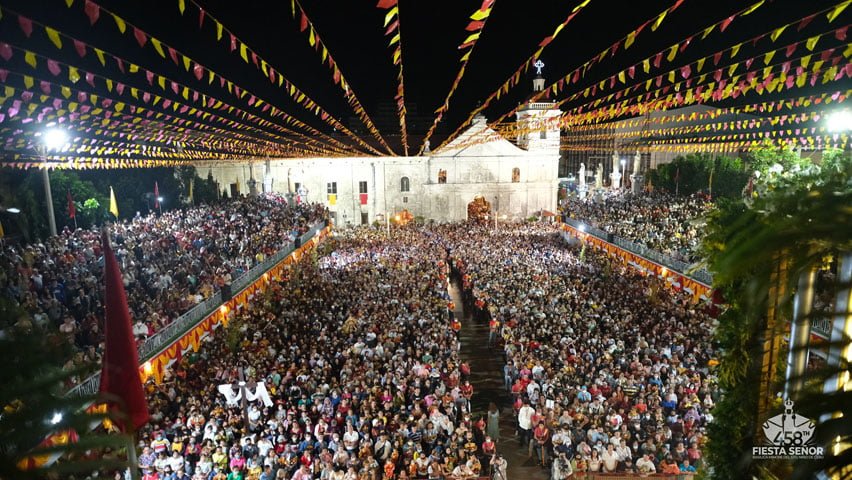
Photo courtesy of Basilica Minore del Santo Niño de Cebu Facebook page
The Basilica is also the central focus for the religious aspect of the Sinulog Festival, held annually on the third Sunday of January (which falls on Jan. 21 this year). Novena masses are held in the days leading up to the Solemn Procession on the day before the Sunday parade. For Sinulog 2024, that’ll be on Jan. 20. The morning of the same day features a reenactment of the baptism of Queen Juana and Rajah Humabon.
2. Mix faith and history at Magellan’s Cross.
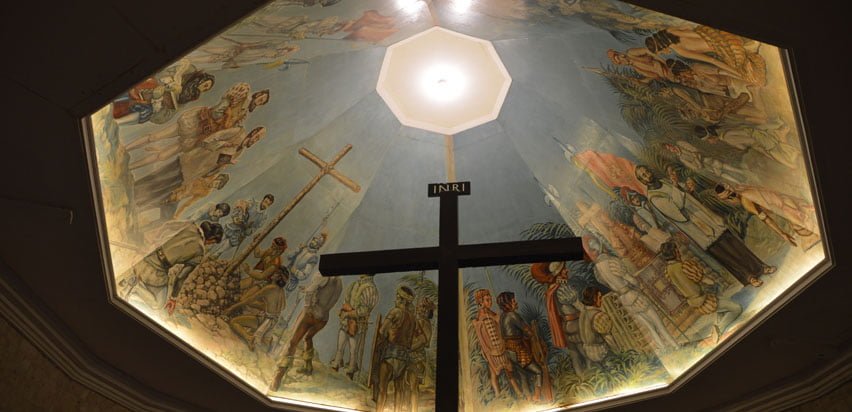
Located right across the Santo Niño Basilica in Plaza Sugbo is one of Cebu’s most iconic landmarks. The stone kiosk holds the cross that was planted in 1521 by explorers led by Ferdinand Magellan in his famous expedition to circumnavigate the world.
You can easily book a car on ride-hailing app Grab (download here) or take a taxi to the Basilica and Magellan’s Cross—all drivers in Cebu will know where it is! Both sites are considered National Treasures of the Philippines.
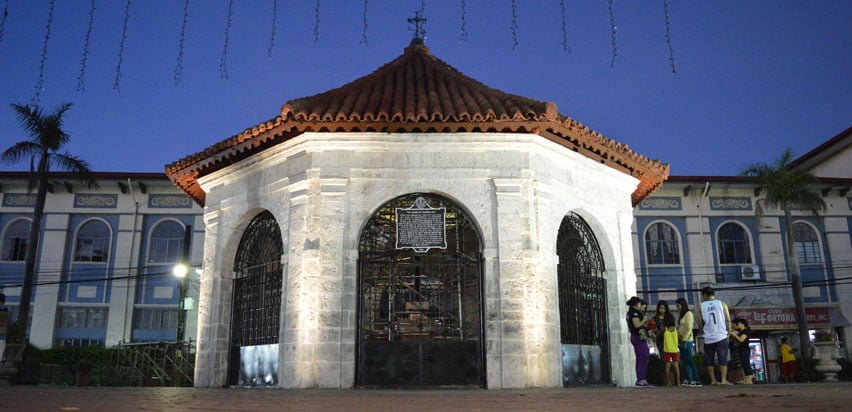
Magellan’s Cross interior and exterior photos by Bea Lopez
3. Visit local museums and ancestral houses.
There are several ancestral houses and museums for you to visit to get some insight into what life was like for Cebuanos throughout history. Here are a few top picks:
Yap-San Diego Ancestral House: This is the oldest house in Cebu and one of the oldest in the whole country. The house was built in the late 1600s and originally owned by Don Juan Yap and Doña Maria Florido. You can find it at 155 Lopez Jaena corner Mabini Street, Parian, Cebu City, and it’s open everyday from 9AM to 6PM.
View this post on Instagram
Casa Gorordo Museum: Another house-turned-museum, Casa Gorordo was built in the mid-1800s. Originally owned by the Gorordo family, it was acquired and now managed by the Ramon Aboitiz Foundation Inc. (RAFI). The house can be found at 35 Eduardo Aboitiz Street, Parian, Cebu City.
View this post on Instagram
Museo Sugbo/Cebu Provincial Museum: Formerly Cebu’s Provincial Jail, Museo Sugbo houses artifacts, paintings, and photos showcasing Cebuano history from precolonial times to more modern history. You might also recognize the courtyard as the location of the viral prison-dancing videos from several years ago. This can be found on M.J. Cuenco Avenue, Tejer, Cebu City, and is open from 9AM to 6PM daily, except Mondays.
Cathedral Museum of Cebu/Archdiocesan Museum of Cebu: The Catholic Church is deeply entwined in Cebuano history, so faithful or not, you may still want to check out this museum located beside the Cebu Metropolitan Cathedral (also a must-visit for religious tourists or fans of architecture). The Archdiocesan Museum of Cebu, also known as the Cathedral Museum, was built in the early 1900s and houses religious artifacts.
View this post on Instagram
Plus! While you’re downtown, you can take a walk or drive to the Cebu Heritage Monument and go down Colon Street, which is the oldest street in the Philippines.
4. Climb the steep steps & ask spirits to grant your wish at Cebu Taoist Temple.
The Cebu Taoist Temple’s architecture, fierce dragon statues, and small replica of the Great Wall of China highlight the thriving Chinese-Filipino community that has been in Cebu for centuries. While at the temple, make a wish in the wishing well and petition the spirits to grant it using carved blocks of wood. If you go on a Wednesday or Sunday, you can also participate in the temple’s ritual. This involves climbing 181 steps representing the chapters of Taoist scriptures, lighting joss sticks in honor of the spirits, and asking monks to read your fortune.
Cebu Taoist Temple is located in Beverly Hills Subdivision, Lahug, Cebu City. It’s open daily from 9AM to 5PM. If you’re taking a cab or Grab car here, make arrangements with your driver to wait for you, as getting a ride back may be difficult. There’s no entrance fee, but the taxi fare can be a bit pricey.
5. Marvel at the monument to love that is the Temple of Leah.
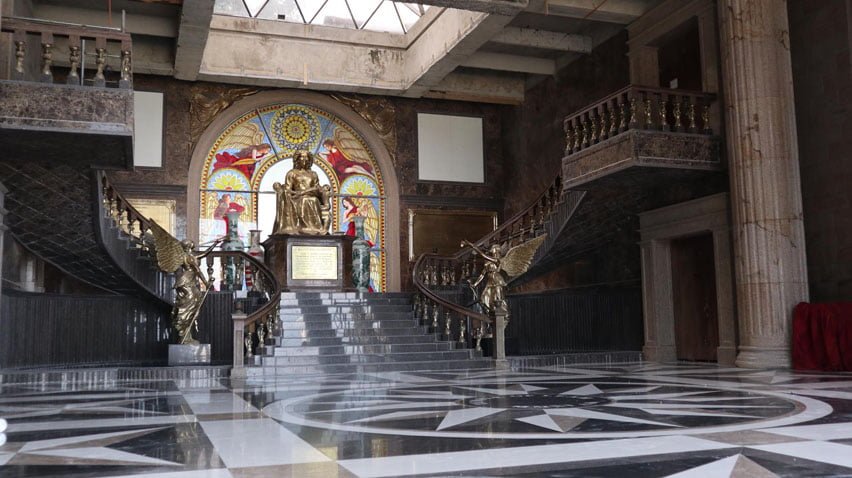
Photo courtesy of Temple of Leah Facebook page
This landmark was built as a testament of love by Teodorico Soriano Adarna to his wife Leah Albino-Adarna following her death. (If you’re into Pinoy showbiz, those are actress Ellen Adarna’s grandparents.) The architecture is inspired by classical Greco-Roman aesthetics and features statues of gladiators and lions, angels and gods. A statue of Leah herself stands 10 feet tall near the lobby.
The Temple of Leah is located in Barangay Busay, Cebu City, some distance from the city center. If you take a Grab car or cab to the location, you’ll want to make sure your driver stays to wait for you. You can also commute to the end of the street leading up to the temple, taking an 04D, 04I, or 04H jeepney and asking to be dropped off near the Temple of Leah. You’ll then need to walk the rest of the way up to the temple.
6. Stop to smell the roses (and other blooms) at the flower farms in Sirao.
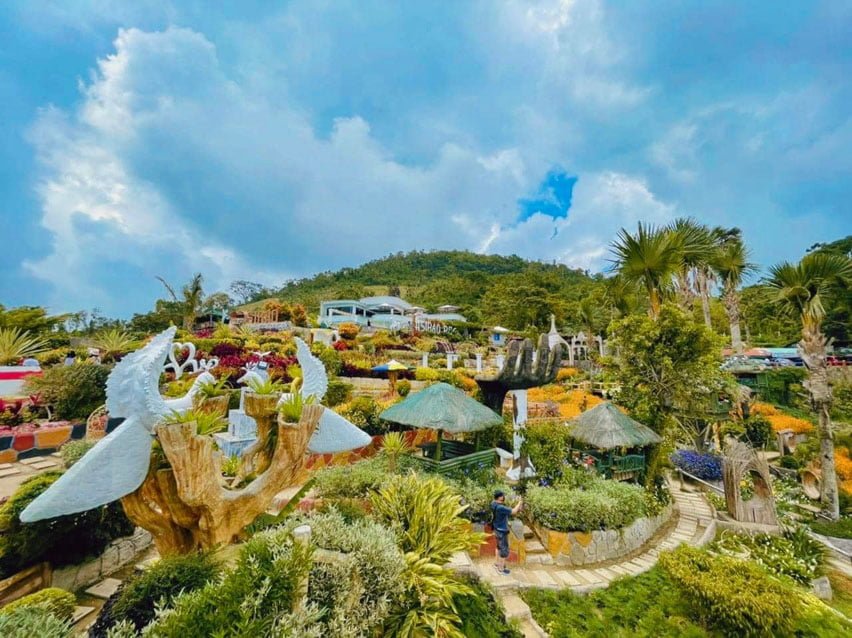
Photo courtesy of Sirao Pictorial Garden Facebook page
At the Sirao Pictorial Garden and Camping Site, apart from the colorful flowers, there are spots designed for Instagram-friendly photos. The most famous is the large hand coming up from the ground where tourists can sit or stand in the palm with a view of the mountains behind them. There are also various heart and love-oriented structures, colorful archways, and seats made out of vines that make for perfect pics. Sirao Pictorial Garden can be found along Canada Drive, Kan-irag, Barangay Sirao, Cebu City.
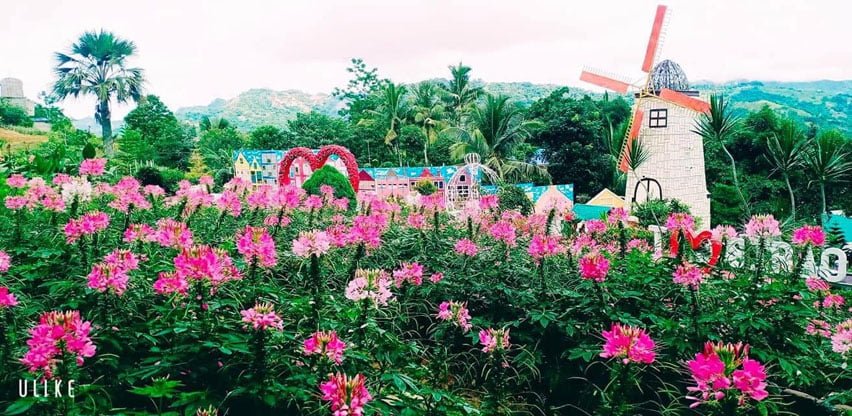
Photo courtesy of Sirao Garden Little Amsterdam Facebook page
Just up the road and still in Barangay Sirao is the original Sirao flower farm. Also known as Little Amsterdam of Cebu, the Sirao Garden features an array of colorful flowers like celosias, sunflowers, and hyacinths. Replicas of the Netherlands’ windmills and other structures make for prime selfie spots.
7. Walk the walls and check out artifacts from Spanish colonial times at Fort San Pedro.

Photo courtesy of Fort San Pedro Cebu Facebook page
Also known as Fuerte de San Pedro in Spanish, this triangular fort was built by the forces of Miguel Lopez de Legazpi during his expedition to the Philippines. Although the stone fort’s gate bears the arms of the kingdoms of Castile and Leon with the date 1738, some historians claim the fort was built earlier, in the 1600s. The fort has played strategic roles in the Philippine Revolution, the American occupation, and the liberation of Cebu from Japanese forces in World War II.
The museum located in the fort showcases Spanish artifacts like documents, paintings, sculptures, and statues, as well as cannons mounted on the tops of the fort walls.
Fort San Pedro is located next to the Plaza Independencia park just outside the CSCR Tunnel, along M.J. Cuenco Avenue and Legaspi Extension in Barangay San Roque, Cebu City. It’s very close to Magellan’s Cross, the Santo Niño Basilica, and the Archdiocesan Museum.
8. Go island-hopping off Mactan Island.
You don’t have to leave the metro to snorkel your way to a sea adventure. You can head to Mactan Island to jump on a pumpboat (banca) to tour nearby islands, which will likely include:
- Caohagan Island, with its snorkel-friendly reef and crystal-clear lagoon;
- Hilutungan Island (also spelled as Gilutungan), with its protected reef on the east side, lagoon with a white sand beach in the northwest, and floating lodges on the west side;
- Nalusuan Island (“Place of Penises,” named after the sea cucumbers found here and what they resemble), which is great for snorkelers and divers; and
- Pandanon Island, with its white-sand beach and sandbar.
Boat tours will take around six to eight hours, depending on the tide, so you can expect to leave your hotel or resort at 7AM or 8AM then return around 2PM or 3PM, possibly later. You’ll enjoy grilled meat and seafood for lunch on the boat. You can easily search for licensed tour agencies on Google or ask your hotel if they have partner services. Just about any hotel in the cities of Cebu, Mandaue, or Lapu-Lapu should have contacts and/or packages to share.
9. Take the nature tour & birdwatch at Olango Island Wildlife Sanctuary.
View this post on Instagram
Olango Island is the main island in the Olango Island Group that includes the islands mentioned in the island-hopping tours above. But it warrants its own mention because of the wealth of nature adventures it offers tourists. The island’s wildlife sanctuary is home to almost 100 different bird species. Half of these are migratory species from Siberia, Northern China, Japan, and more. Birds from the north use the island as a stopover on their winter journey to Australia and New Zealand.
Olango’s 1020 hectares of tidal flats were declared a protected area in 1992. In 1994, the island was included in UNESCO’s Ramsar List of Wetlands of International Importance, the first site to be declared such in the Philippines.
Other than bird watching, eco-tourists will enjoy snorkeling or scuba diving around Olango’s reefs and taking nature walks around the wetlands and mangrove gardens. You’ll need to book a boat tour from Mactan Island to get to Olango.
10. Visit the Mactan Shrine and dine SuTuKil by the water.
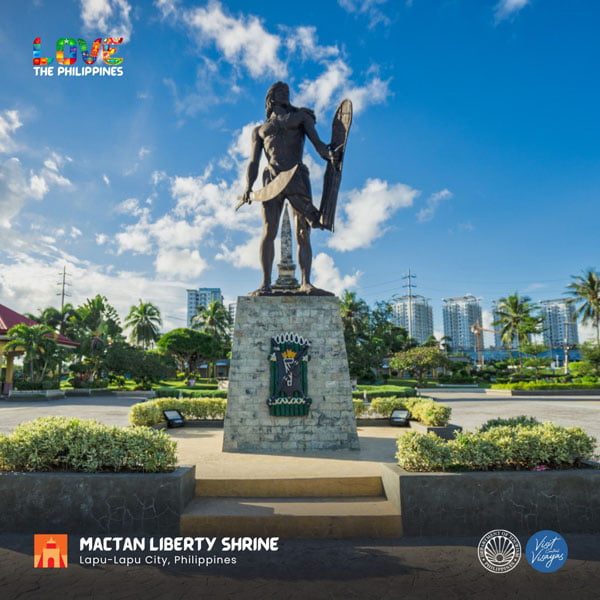
Photo courtesy of Department of Tourism Central Visayas Office
Long before the Katipunan uprising against the Spanish colonialists, there was one man who fought against the encroachment of Europeans on Philippine shores: Datu Lapu-Lapu is famous for leading the battle against the Spanish explorers in 1521, in which Magellan lost his life. The Mactan Shrine can be found near the beach where this battle occurred.
After your visit, you may want to go to the nearby local market and paluto dining area where you can get an authentic SuTuKil experience. This is actually a portmanteau for sugba, tuwa, kilaw, which refers to three ways to cook food: sugba meaning to barbecue or grill, tuwa meaning to cook in a broth (known to Tagalogs as tinola), and kilaw meaning ceviche or to cook in vinegar.
Tips on getting around the metro
Most of the places you can visit around Metro Cebu are accessible via taxi or by booking a ride on the Grab app. If you’re the adventurous type, you can also research jeepney routes or rent a scooter to take yourself from place to place.
If you prefer the comfort of being driven, however, you can book a city tour with the many tour services available. Car rental companies and even taxi companies may offer city tour rates with preset stops, which will be cheaper than a tour with a guide plus a driver.
